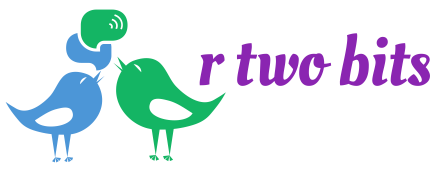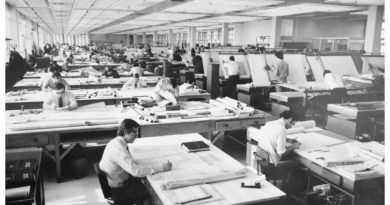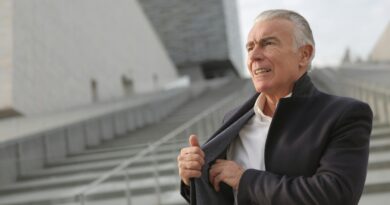The Epiphany Connection – Is It Real?
My sister, Morgan Brig, is an accomplished fine artist. My brother, Mark, is a research scientist who started a photovoltaics company. I founded an aerospace company. Is there some connecting tissue why we all started businesses? Is there some leap of faith or is it a natural evolution and nothing extraordinary?
There were the usual reasons people started businesses – thinking we could do it better than our current employer; wanting independence; having new ideas or inventions; being surplussed from their job or division; or having an altruistic, moral or spiritual imperative, a message to broadcast. For me, it was a combination of those things. But I also believed there was something more to it.
Mark has always been a dabbler with a boundless curiosity. He’ wa’s constantly into a little of this, a bit of that – whatever whimsy might possess him at the moment. Among other things, along the way he has taken up juggling, tap dancing, radio-controlled airplanes, amateur astronomy, photography, kite flying and pottery. It seems natural his interest in how things work would gravitate to physics.
After Boeing cancelled his government-funded project, he and his old boss took their patents, their research and their great ideas and started a solar cell research company. Fascinating work, and right up his alley as he had a PhD in Materials Science. Obviously, they were excited to know they were on to something. They did a lot of R&D for California Edison, the Army and a variety of other industries. They developed some very cool ideas and prototypes. After more than twenty years the market developed and became more focused and their part of it dried up. I was disappointed for him, because I knew how much he loved it.
He took up digitally enhanced, fine art photography. He had several showings around the Seattle area and sold pieces wherever he exhibited. Before the advent of drones, he was one of the first artists to meld kites with cameras to take remote aerial shots. I thought he was pretty good, but it wasn’t enough to replace a six-figure income. After a time, he went back to his physics roots in the nanofabrication research lab at the University of Washington.
Morgan has always been an artist. During high school she was a top ten student, cheerleader and editor of the yearbook – leadership, editing and organizational skills she would later further refine. After spending a year at Western Washington University, she decided to focus on art, so she did two years at Seattle Central College in their commercial art program. From there, she entered the prestigious Art Center College of Design in Pasadena and graduated at the top of her class. She was recruited out of college to an advertising agency in Minneapolis, where she spent 2-1/2 years before she couldn’t take the winters anymore. To keep her, the agency offered to set her up with a branch agency in Seattle, which she did for another dozen years. By then, she wanted a new, freer challenge. So she quit and put those marketing skills to use for her own successful fine art studio. She now sells her multi-media masks, paintings and sculptures around the country.
For me, it’s also been a variety of things – the tactile experience mastering the craft of design on a drafting board, the history of art, team sports, skiing, economics and business, photography, volunteer work. It was certainly not as eclectic as my brother, but it was a variety of things often appearing to have no connection to each other.
Over the years I often wondered if these things would ever produce any synergy. Just as things were jelling, along came Steven Jobs shedding a light on my journey with his 2005 Stanford commencement speech about ‘connecting the dots.’ He said you couldn’t know when or how your life experiences would come together, you simply had to have faith one day they would connect like dots, leading to something wonderful.
It was gratifying and reassuring hearing Jobs give credence to my unorthodox education and the importance of doing. Even though things seemed disconnected from everything else, whimsy and serendipity were not always pointless; they were simply dots waiting to be connected.
For a long time I didn’t know what lay ahead, but I felt it would sort itself out as long as I kept moving. I had found the paradox: I couldn’t make choices that addressed my desires if I didn’t create opportunities. How? By doing. I found the only prerequisite was to engage in things for which I had an interest, a passion. That was not to say conscious decisions were not part of the equation – they absolutely were, but so were random interests. I just had to keep moving, keep experiencing. I’ve come to realize that in the end it’s almost impossible for your dots not to connect. Thank you, Steven, for helping me understand it wasn’t madness, and it wasn’t random – I really was pursuing a purpose.
I realized it had finally happened to me. Simply by making choices from self-made opportunities, I had a life filled with accomplishment and satisfaction. Who was to know an education that appeared to have no focus would yield the varied skillsets to guide others and run a business? To my way of thinking, one needed to be resourceful, innovative, and proactive, able to motivate and mentor others yet leave them to their own devices. Encourage them to exercise critical and creative thinking and, most importantly, positive human interaction.
Yes, face-to-face; a messy combination of discussion, compromise, creativity, negotiation, diplomacy and tact to reap a solution. Great stuff, that – skills that were always highly prized and the greatest single reason for success. A genius who can’t get others to understand and share his ideas goes nowhere. As President Theodore Roosevelt was said to have noted, “Nobody cares how much you know, until they know how much you care.” I felt consistent adherence to personal interaction amid confrontation required great conviction. For me, conviction turned out to be a catalyst for overcoming my fears and going further.
Some believe it isn’t possible to wholly transplant personal integrity and morality into business. I think it’s the only way to go. I think, like me, most people start businesses to live and give on their own terms. Lose that truth and the endeavor loses its meaning. Certainly, there are people in business who lack morality and integrity. But I believe the vast majority of people in business want to experience life’s “Success Road” where morality, integrity and being your best self play a big part. Whatever wealth may come is merely a by-product of doing something right.
In my early years in aerospace, I enjoyed the tactile experience of drawing parts on a drafting board. But as we transitioned to nascent CAD programs that enjoyment mostly vanished. CAD back then was initially limited to 2D with some 3D and cumbersome, non-intuitive commands and poor ergonomics. The screens were small so visualizing large parts or drawings was a difficult exercise. It required a high level of concentration, visual scrutiny and technical problem solving. Those early systems were mentally and physically exhausting. They eventually were able to deliver on the promise of making design much more holistic by virtually combining large assemblies, systems and airplane sections, but those early days were no fun.
I didn’t want to be tied to a computer for hours on end. That motivated me to read and develop opportunities to move up the ladder into management. But leaving the CAD environment was not my only motivation. I wanted to guide projects, to see if I could realize the dreamy things I was visualizing and what kind of a difference I could make. At one time or another we all wonder if we are good enough to accomplish something more, so leading design projects became my next goal.
Aircraft cabin interiors was a combination discipline, mixing the difficulties of correctly making structural and systems modifications with supporting the vision of features that provided a pleasant environment and enhanced passenger comfort. Material selection and finishes came into play when I tried to be extra creative, which was one of the things that had always differentiated my design attitude from others. When I worked for others, that little extra creativity sometimes got me in hot water. I didn’t care.
I was pretty sure if I did the right thing for the right reason good things would invariably happen. I know our customers noticed the difference, and it was a big reason why they came back to us. When people noticed the attention paid to the details, they knew we took pride in our work and they were the beneficiaries of our extra effort. It was also why I continued to be involved in design details at TTF – I wanted my mark on our products. I have to admit there was an element of ego in that, but only because I wanted to make a difference. It also ensured the design mantra I envisioned for the company stayed intact, that it was communicated over and over again. I wanted it ingrained in everyone’s thinking. As a leader, if I cared about my company and my employees, I believed I could embed a legacy that could endure. So it had to be more than ego driving me. It needed to be about culture, mindset, process discipline, communication, and execution.
And yet, through all of the decision points and the complexity we wanted to maintain a design ethos best expressed by critic William Gaddis – “Simplicity is the ultimate sophistication.”
Elegant simplicity – something to strive for. Beautiful automobiles, with their unique combination of art, energy, and movement appeal to all five senses; they embody all of that. They are complex machines and wonderful works of kinetic art. Not only do they have moving parts, they are also bodies moving through space and time. And they represent a sense of romance and accessibility to adventure not found in many other objects. Maybe I should have been a car designer. If I’d grown up in Detroit I might well have been one.
Having greatly admired my parents and grandparents, I wish I knew more about their thoughts, the crossroads of their lives and why they chose certain forks. I miss not knowing more about them. So, I think I owe it to my family to tell them my story. They deserve to have more than a vague sense of what I was and what I did. I became a story worth telling, if for no other reason than they should know.
Lastly, we need to understand even though we are alone with our thoughts, all of us are trying to realize and put into practice the same epiphanies about life and our place in it. Sometimes we need a shove to put our thoughts into actions. Knowing someone else is thinking what we are thinking is often all it takes. I was lucky to find that.




